Supermoon Total Lunar Eclipse And Lightning Storm

Supermoon Total Lunar Eclipse and Lightning Storm
More Posts from Inter-stellxr-blog and Others






Mostly Mute Monday: The Glory of Saturn’s Rings
“Saturn is remarkable in a number of ways; among all the planets we know of, it’s the least dense, and also the only one with a spectacularly visible set of rings. Composed of icy, dust-like material, these rings are not solid at all, but made up of particles that pass each other, stick together briefly and then fly apart once again.
Snowballs and planetesimals coalesce, only to be torn apart by tidal forces exerted by Saturn and its passing moons. Gaps in the inner rings are caused by the gravitational presence of moons themselves, while many of the outer rings — like Saturn’s E-ring, below — are actually caused by the moons themselves.”
From their discovery in the 1600s, Saturn’s rings have been a source of wonder and puzzlement to skywatchers everywhere. The only ring system visible through most telescopes from Earth, Saturn’s main rings at more than 70,000 km long, yet no more than 1 km in thickness. Once thought to have only two gaps in them, the Cassini spacecraft has revealed over a thousand, teaching us that Saturn’s rings are likely as old as the planet itself, and will likely continue to exist for as long as our Sun shines.

Funky Light Signal From Colliding Black Holes Explained
Entangled by gravity and destined to merge, two candidate black holes in a distant galaxy appear to be locked in an intricate dance. Researchers using data from NASA’s Galaxy Evolution Explorer (GALEX) and NASA’s Hubble Space Telescope have come up with the most compelling confirmation yet for the existence of these merging black holes and have found new details about their odd, cyclical light signal.
The candidate black hole duo, called PG 1302-102, was first identified earlier this year using ground-based telescopes. The black holes are the tightest orbiting pair detected so far, with a separation not much bigger than the diameter of our solar system. They are expected to collide and merge in less than a million years, triggering a titanic blast with the power of 100 million supernovae.
Researchers are studying this pair to better understand how galaxies and the monstrous black holes at their cores merge – a common occurrence in the early universe. But as common as these events were, they are hard to spot and confirm.
PG 1302-102 is one of only a handful of good binary black hole candidates. It was discovered and reported earlier this year by researchers at the California Institute of Technology in Pasadena, after they scrutinized an unusual light signal coming from the center of a galaxy. The researchers, who used telescopes in the Catalina Real-Time Transient Survey, demonstrated that the varying signal is likely generated by the motion of two black holes, which swing around each other every five years. While the black holes themselves don’t give off light, the material surrounding them does.
In the new study, published in the Sept. 17 issue of Nature, researchers found more evidence to support and confirm the close-knit dance of these black holes. Using ultraviolet data from GALEX and Hubble, they were able to track the system’s changing light patterns over the past 20 years.
What’s causing the changes in light? One set of changes has to do with the “blue shifting” effect, in which light is squeezed to shorter wavelengths as it travels toward us in the same way that a police car’s siren squeals at higher frequencies as it heads toward you. Another reason has to do with the enormous speed of the black hole.
[Continue Reading→]

|Myheimu|



Astronomy Night at the White House
NASA took over the White House Instagram today in honor of Astronomy Night to share some incredible views of the universe and the world around us. Check out more updates from the astronauts, scientists, and students on South Lawn.

Here’s a nighttime view of Washington, D.C. from the astronauts on the International Space Station on October 17. Can you spot the White House?

Check out this look at our sun taken by NASA’s Solar Dynamics Observatory. The SDO watches the sun constantly, and it captured this image of the sun emitting a mid-level solar flare on June 25. Solar flares are powerful bursts of radiation. Harmful radiation from a flare can’t pass through Earth’s atmosphere to physically affect humans on the ground. But when they’re intense enough, they can disturb the atmosphere in the layer where GPS and communications signals travel.

Next up is this incredible view of Saturn’s rings, seen in ultraviolet by NASA’s Cassini spacecraft. Hinting at the origin of the rings and their evolution, this ultraviolet view indicates that there’s more ice toward the outer part of the rings than in the inner part.

Take a look at the millions of galaxies that populate the patch of sky known as the COSMOS field, short for Cosmic Evolution Survey. A portion of the COSMOS field is seen here by NASA’s Spitzer Space Telescope. Even the smallest dots in this image are galaxies, some up to 12 billion light-years away. The picture is a combination of infrared data from Spitzer (red) and visible-light data (blue and green) from Japan’s Subaru telescope atop Mauna Kea in Hawaii. The brightest objects in the field are more than ten thousand times fainter than what you can see with the naked eye.

This incredible look at the Cat’s Eye nebula was taken from a composite of data from NASA’s Chandra X-ray Observatory and Hubble Space Telescope. This famous object is a so-called planetary nebula that represents a phase of stellar evolution that the Sun should experience several billion years from now. When a star like the Sun begins to run out of fuel, it becomes what is known as a red giant. In this phase, a star sheds some of its outer layers, eventually leaving behind a hot core that collapses to form a dense white dwarf star. A fast wind emanating from the hot core rams into the ejected atmosphere, pushes it outward, and creates the graceful filamentary structures seen with optical telescopes.

This view of the International Space Station is a composite of nine frames that captured the ISS transiting the moon at roughly five miles per second on August 2. The International Space Station is a unique place—a convergence of science, technology, and human innovation that demonstrates new technologies and makes research breakthroughs not possible on Earth. As the third brightest object in the sky, the International Space Station is easy to see if you know when to look up. You can sign up for alerts and get information on when the International Space Station flies over you at spotthestation.nasa.gov. Thanks for following along today as NASA shared the view from astronomy night at the White House. Remember to look up and stay curious!




Kennedy Space Center | by North Sky Photography
Facebook | Instagram | 500px | Tumblr | Society 6
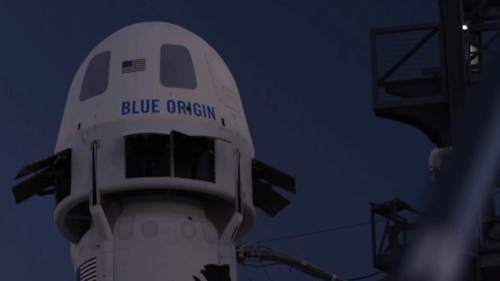
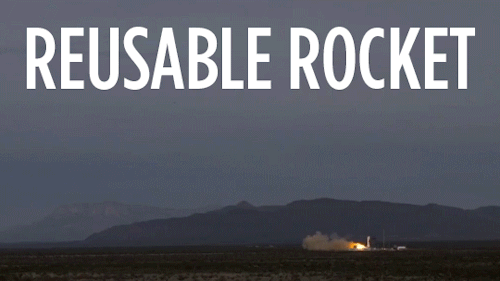

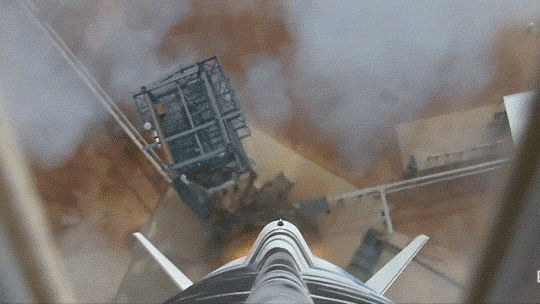
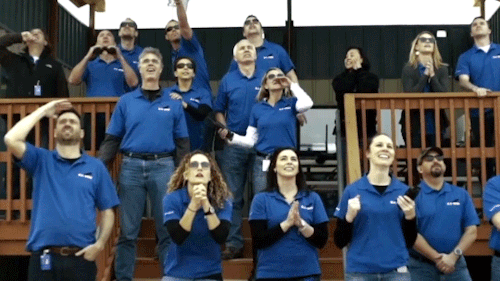
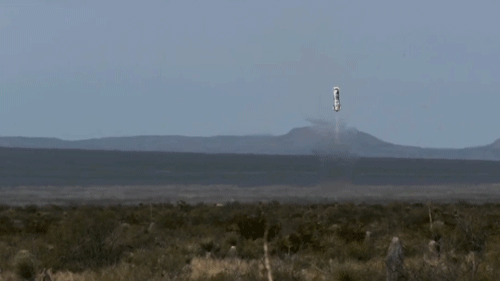

Via his very first tweet, Jeff Bezos announced that his spaceflight company has accomplished a historic first. It sent a rocket to the edge of space and then landed that rocket’s main fuselage gently on dry land.
Most things humans have sent into space are pushed up there by a disposable rocket. Once the rockets do their job, they fall back to earth, usually worse for wear. They have to be rebuilt each time (though sometimes their parts can be reused). That’s an expensive process, especially if you are a private company hoping to bring tourists to space. Virgin Atlantic, Elon Musk’s company SpaceX and Bezos’ Blue Origin all want to do just that.
And now Blue Origin has paved the way, landing its rocket on its second attempt (the propulsion module was destroyed when they first tried). Here’s the video in full:
Elon Musk responded to the news on Twitter. He pointed out that it requires much greater speed to actually reach orbit than it does to reach the edge of space. (Phil Plait has some good analysis of the exchange over on his Bad Astronomy blog.)
Still, it’s a pretty amazing accomplishment.
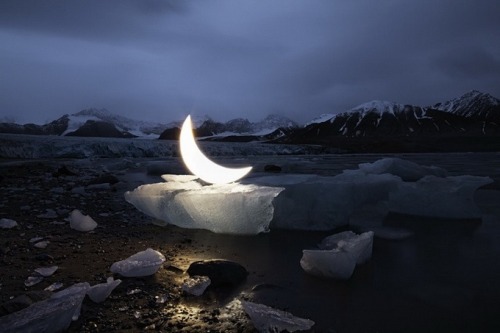



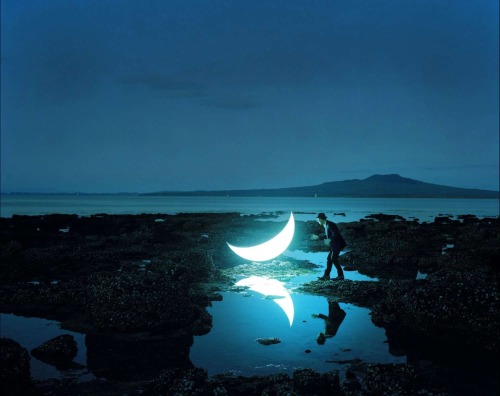
Top 10 Ways the Space Station is Helping Get Us to Mars
Believe it or not, the International Space Station is paving our way to Mars. Being the only microgravity laboratory in which long-duration investigations can take place, it provides deeper understanding of how the human body reacts to long-term spaceflight. Here are the top 10 ways the space station is helping us on our journey to the Red Planet:
10: Communication Delays

Have you ever sent a text and got frustrated when it took longer than 3 seconds to send? Imaging communicating from Mars where round-trip delays could take up to 31 minutes! Our Comm Delay Assessment studies the effects of delayed communications for interplanetary crews that have to handle medical and other emergencies in deep space.
9. Astronaut Functional Performance

After a long nights sleep, do you ever feel a bit clumsy when you first get out of bed? Imagine how crew members might feel after spending six months to a year in microgravity! Our Field Test investigation is working to understand the extend of physical changes in astronauts who live in space for long periods of time, with an aim toward improving recovery time and developing injury prevention methods for future missions.
8. Psychological Impacts of Isolation and Confinement

In order to study the behavioral issues associated with isolation and confinement, researchers evaluate the personal journals of space station crew members. These study results provide information to help prepare us for longer duration spaceflight.
7. Impacts on Vision

Did you know that long duration spaceflight can often cause changes to crew members’ vision? It can, and our Ocular Health study monitors microgravity-induced visual impairment, as well as changes believed to arise from elevated intracranial pressure. All of this work hopes to characterize how living in microgravity can affect the visual, vascular and central nervous systems.
6. Immune Responses

An important aspect of our journey to Mars is the need to understand how long-duration spaceflight affects they way crew members’ bodies defend agains pathogens. Our Integrated Immune investigation collects and analyzes blood, urine and saliva samples from crew members before, during and after spaceflight to monitor changes in the immune system.
5. Food for Long-Duration Crews

Just like a hiker preparing for a long trek, packing the foods that will give you the most energy for the longest amount of time is key to your success. This is also true for astronauts on long-duration missions. Our Energy investigation measures a crew members’ energy requirements, which is a crucial factor needed for sending the correct amount of the right types of food to space.
4. Exercise for Long-Term Missions

Rigorous exercise is already a regular part of astronauts’ routines, and continuing that focus will be critical to keeping crew members’ bodies strong and ready for a mission to Mars and a healthy return to Earth. Our Sprint investigation is studying the best combination of intensity and duration for exercise in space.
3. Determine Best Habitat/Environment for Crews

Have you ever complained about your room being too small? Imagine living in cramped quarters with an entire crew for months on a Mars mission! Our Habitability investigation collects observations that will help spacecraft designers understand how much habitable volume is required, and whether a mission’s duration impacts how much space crew members need.
2. Growing Food in Space

There’s nothing like fresh food. Not only does it provide valuable nutrition for astronauts, but can also offer psychological benefits from tending and harvesting the crops. Our Veggie investigation studies how to best utilize a facility aboard the space station for growing fresh produce in microgravity.
1. Manufacturing Items in Space

When crews head to Mars, there may be items that are unanticipated or that break during the mission. Our 3-D Printing in Zero-G Technology Demonstration would give crews the ability to manufacture new objects on demand while in space.
Make sure to follow us on Tumblr for your regular dose of space:http://nasa.tumblr.com
-
 crashalido liked this · 1 year ago
crashalido liked this · 1 year ago -
 nlockett reblogged this · 1 year ago
nlockett reblogged this · 1 year ago -
 nlockett liked this · 1 year ago
nlockett liked this · 1 year ago -
 loverfromanothercover liked this · 1 year ago
loverfromanothercover liked this · 1 year ago -
 mmirrors reblogged this · 3 years ago
mmirrors reblogged this · 3 years ago -
 mmirrors liked this · 3 years ago
mmirrors liked this · 3 years ago -
 fucktheworldiwantyouuu liked this · 4 years ago
fucktheworldiwantyouuu liked this · 4 years ago -
 thomasbrisenio reblogged this · 4 years ago
thomasbrisenio reblogged this · 4 years ago -
 whitney-ann liked this · 5 years ago
whitney-ann liked this · 5 years ago -
 astronofeminist reblogged this · 5 years ago
astronofeminist reblogged this · 5 years ago -
 astronofeminist liked this · 5 years ago
astronofeminist liked this · 5 years ago -
 glitch-alienthings reblogged this · 5 years ago
glitch-alienthings reblogged this · 5 years ago -
 glitch-alienthings liked this · 5 years ago
glitch-alienthings liked this · 5 years ago -
 spaxey reblogged this · 5 years ago
spaxey reblogged this · 5 years ago -
 borndamned reblogged this · 6 years ago
borndamned reblogged this · 6 years ago -
 borndamned liked this · 6 years ago
borndamned liked this · 6 years ago -
 crumblingsugarcookie liked this · 6 years ago
crumblingsugarcookie liked this · 6 years ago -
 cartierflowers reblogged this · 6 years ago
cartierflowers reblogged this · 6 years ago -
 ialwayswas reblogged this · 6 years ago
ialwayswas reblogged this · 6 years ago -
 moretomhardy liked this · 6 years ago
moretomhardy liked this · 6 years ago -
 slightestcomplication reblogged this · 6 years ago
slightestcomplication reblogged this · 6 years ago -
 silverliningslurk liked this · 6 years ago
silverliningslurk liked this · 6 years ago -
 thethingsiveseen-photography liked this · 6 years ago
thethingsiveseen-photography liked this · 6 years ago -
 strohller27 liked this · 6 years ago
strohller27 liked this · 6 years ago -
 rosesandlavendertea reblogged this · 6 years ago
rosesandlavendertea reblogged this · 6 years ago -
 rosesandlavendertea liked this · 6 years ago
rosesandlavendertea liked this · 6 years ago -
 thecookiemonsterunderthebed reblogged this · 6 years ago
thecookiemonsterunderthebed reblogged this · 6 years ago -
 rusticarc liked this · 6 years ago
rusticarc liked this · 6 years ago -
 cyborgtopus liked this · 6 years ago
cyborgtopus liked this · 6 years ago -
 orangechanclas liked this · 6 years ago
orangechanclas liked this · 6 years ago -
 icosahedonist reblogged this · 6 years ago
icosahedonist reblogged this · 6 years ago -
 icosahedonist liked this · 6 years ago
icosahedonist liked this · 6 years ago -
 carrieiam liked this · 6 years ago
carrieiam liked this · 6 years ago -
 squeepotatoes liked this · 6 years ago
squeepotatoes liked this · 6 years ago -
 memeramera liked this · 6 years ago
memeramera liked this · 6 years ago -
 bi-spying liked this · 6 years ago
bi-spying liked this · 6 years ago -
 labelleizzy reblogged this · 6 years ago
labelleizzy reblogged this · 6 years ago -
 labelleizzy liked this · 6 years ago
labelleizzy liked this · 6 years ago -
 mcbangle liked this · 6 years ago
mcbangle liked this · 6 years ago -
 moshiznik liked this · 6 years ago
moshiznik liked this · 6 years ago -
 la-vengeance-de-la-meduse liked this · 6 years ago
la-vengeance-de-la-meduse liked this · 6 years ago -
 rhysiana reblogged this · 6 years ago
rhysiana reblogged this · 6 years ago -
 rhysiana liked this · 6 years ago
rhysiana liked this · 6 years ago -
 rayslowik-blog1 liked this · 6 years ago
rayslowik-blog1 liked this · 6 years ago -
 charanadinesblog liked this · 6 years ago
charanadinesblog liked this · 6 years ago
"I don't know who will read this. I guess someone will find it eventually. Maybe in a hundred years or so." -Mark Watney
174 posts